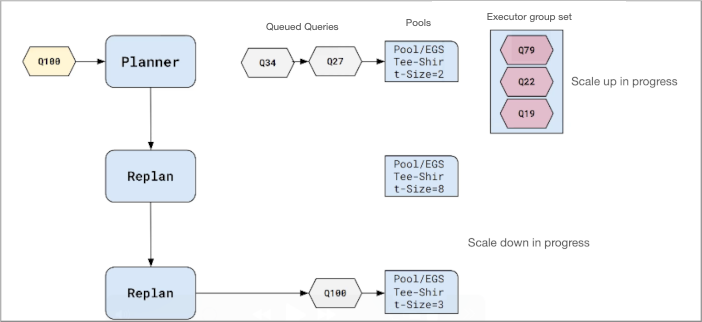How workload-aware autoscaling works
The Impala planner traverses successively larger executor groups iteratively to find one that can run the query efficiently. Traversal stops when the planner finds an acceptable executor group set. In Workload Aware Auto-Scaling, this process is called replanning.
The decision regarding whether an executor group set can run the query is based on memory and CPU estimates. If the query will not fit into the estimated memory, or if the query needs more cores to run efficiently, the planner considers the next largest executor group set. If none is found, the query is queued to the largest pool.

After replanning and establishing an executor group set able to run the query, the query enters the admission queue for a pool. The query will get admitted when the resources are available in the pool. The query may or may not succeed, depending on the resource settings and size of the executor group.
The size of the request pool and corresponding executor group set affects what queries can run there. No extra tuning is required. You can perform complex tuning of request pools using admission control by editing the xml configuration files. For more information, see Managing resources in Impala.
